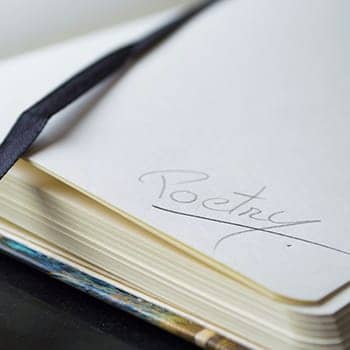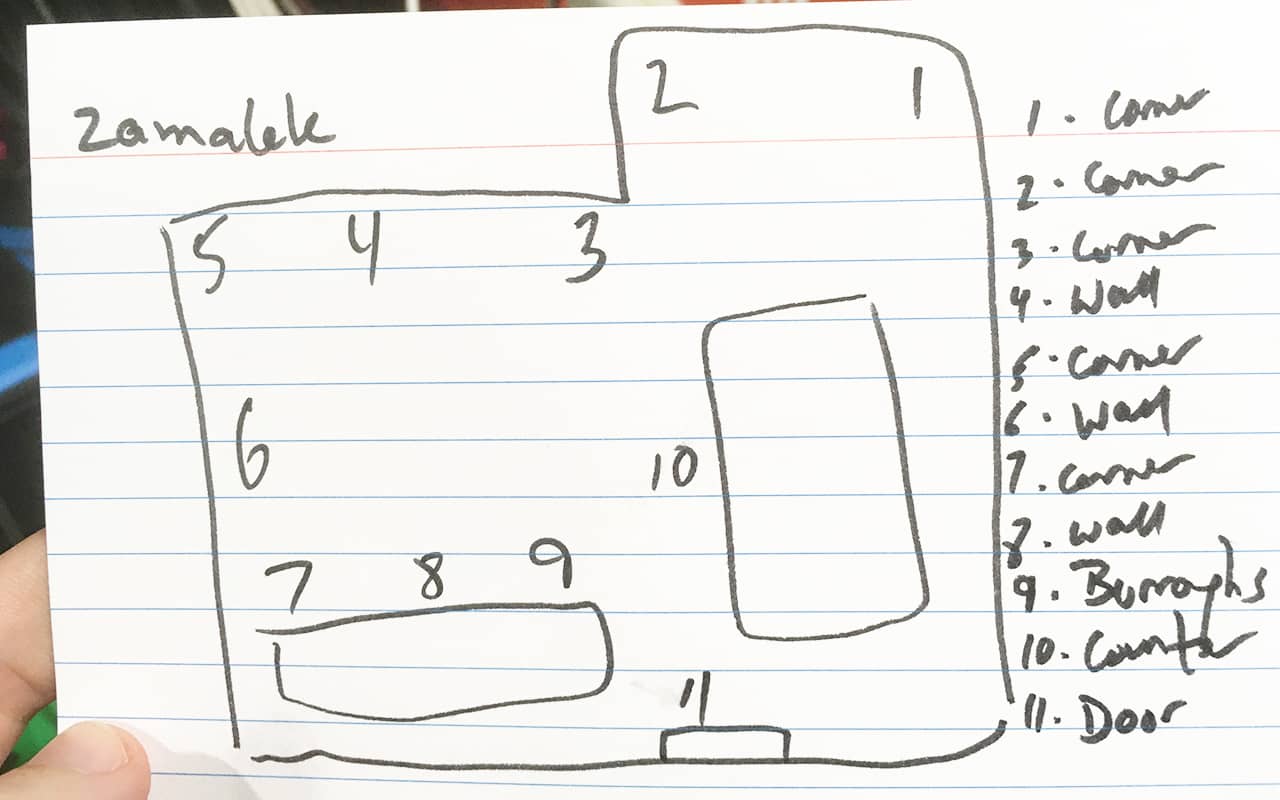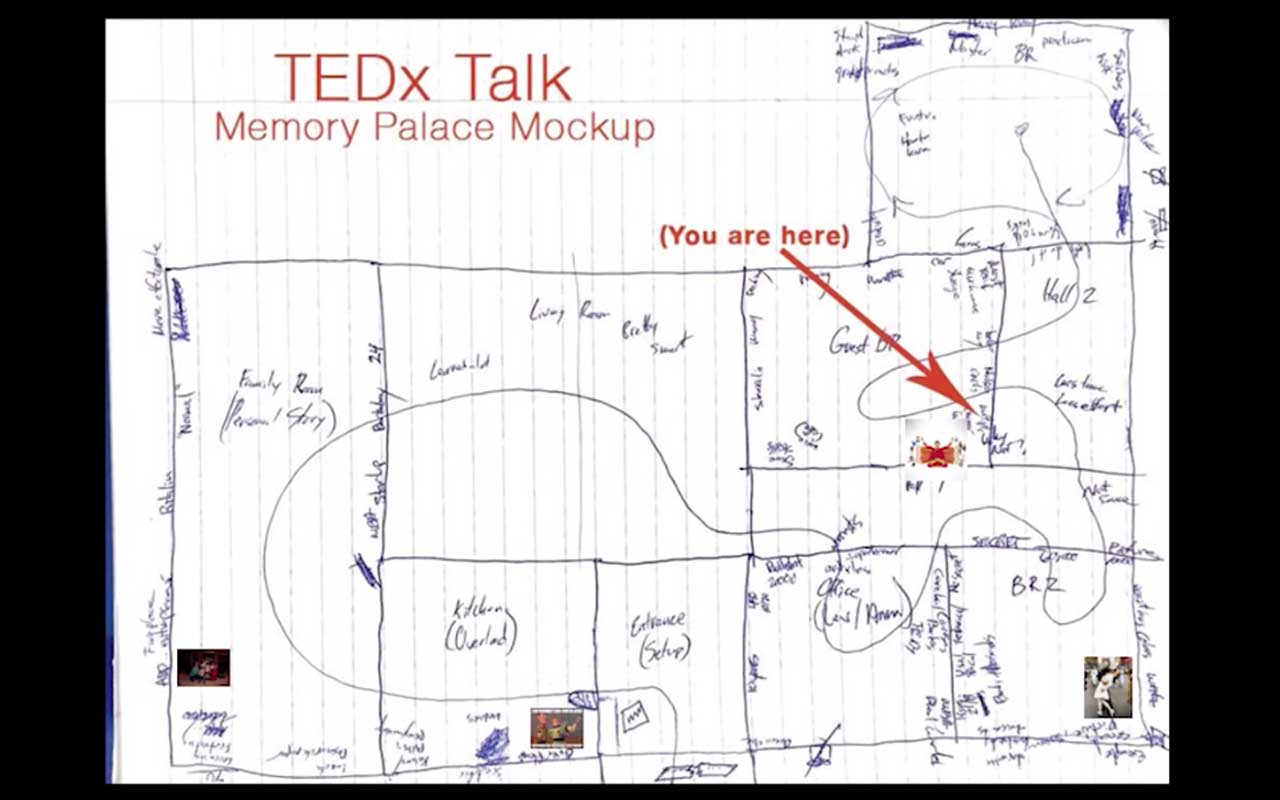 I have an uncle who used to sing the craziest (and often off-color songs).
I have an uncle who used to sing the craziest (and often off-color songs).
He was a WWII vet and looked like the Canadian actor Lorne Greene. He would rip out the kinds of songs that sailors sung and I would rush to write down the lyrics so I could learn them.
And learn them I did.
The hard way.
It was irritating and frustrating.
Even though they say the hand builds the mind and it wasn’t the end of the world that I spent so much time writing them down and rewriting them, I was still still relying on rote learning.
If only I knew then what I know today about memory techniques!
Here are just some of the reasons I wish I had learned these techniques when I was young (even people as young as age six can use them with great success):
How to Memorize Poetry
Using memory techniques to memorize poetry, or even song lyrics, is easier than it seems.
First, let me demonstrate that I can actually do this myself. I believe this is important because there are a lot of people out there who talk about skills they cannot do. In the case of memory, there are even entire forums filled with people giving advice about memory techniques when they clearly haven’t lifted a finger to memorize a poem. That, or they’ve used rote memorization and are pretending they used mnemonics.
So with those isssues in mind, here’s an example of me singing a famous song called The Moon Represents My Heart in Chinese:
The entire song took me just over forty minutes to commit to long term memory. Even though it’s been a few years since I’ve sang the whole thing, I still remember most of the lyrics to this day.
For more examples and demonstrations from me, check out this discussion with Guru Viking where he throws Shakespeare at me to memorize in real time:
Now let’s get into the steps, many of which come directly from my premium course on memorizing poetry.
Step one: Use the Memory Palace Technique
A Memory Palace is essential for memorizing poetry, or anything verbatim.
What is it?
A simple recreation of a familiar location. Using associations, you place mnemonic images along a journey.
Now, what exactly it means to “place” an association along a journey in an imaginary version of a building can be a bit abstract in the beginning.
But basically, you’re taking a corner, a wall or a piece of furniture and elaborating it with strange, exaggerated ideas and feelings that remind you of each word of the poem or song lyric. You can do it in any language and if you look at the Guru Viking video above, you’ll see me demonstrate exactly how and why it works in any language. I use the wall behind me for Shakespeare in the same way I memorize Sanskrit phrases when memorizing ancient mantras.
Finally, I suggest making a quick drawing of a Memory Palace. You don’t have to be artistic. Here’s a quick sketch of a book store in Cairo I have used:

The reason for drawing out the journey is to get it clear in your mind so you can spend your time on the next step. Not creating or assigning the journey as you go, which can lead to a lot of unnecessary frustration.
Step Two: Lay Down Your Associations One Word At A Time (Most Of The Time)
Shakespeare opens King Henry the Fifth like this:
O for a Muse of fire, that would ascend
The brightest heaven of invention,
A kingdom for a stage, princes to act
And monarchs to behold our swelling scene!
When I memorized this, I started at station one with an image of the constellation Orion over the Statue of Liberty.
Using the pegword method, I associated Orion with O and using the general concept of a woman that inspires people, I used the Statue of Liberty.
If I had wanted to make “muse” totally correspond to the pegword method, I would have perhaps had a cow because cows go “moo.” The point is that you have wiggle room to switch between direct sound and spelling correspondences and concepts. Lady Liberty is an especially apt choice here not only because she represents inspiration but she’s also caring a torch, which encodes the word “fire.”
What about a word like “that”? Tricky and abstract, right?
Not really. I just took “th” and linked it with Thor and then used rhyming to have him putting on a hat in a dramatic way. Thor + hat = that.
To memorize at speed, I suggest you develop what I call the Magnetic SRS in my full poetry course. It will help you develop dozens of images for words that seem like they’ll be tricky.
Step Three: Memorize Multiple Words When You Can
Technically, I’ve just given you a description of how this works with the Statue of Liberty example. After Orion for O, she represents five words: “for a Muse of fire.”
You can’t always get away with this kind of compression, but I suggest you keep an eye out for whenever you can. When I memorized my TEDx talk using these techniques for speech memorization, there were some stations in my Memory Palace that contained between 11 and 17 words with just 3-5 images for each.
Step Four: Use Intelligent, Creative Repetition
As I mentioned above, rote learning is a real problem.
What you want instead is something called spaced repetition. It provides a simple means of reviewing memorized material on a schedule that keeps it in memory.
Different poems and lyrics will require different amounts of repetition, and it’s not easy to predict in advance how much content will require how much repetition.
However, there’s something called context dependent memory. Basically, it gives you a boost when you use a lot of content frequently.
So if you read literature and quote it often, you’ll probably need less repetition than someone who doesn’t.
3 Alternative Ways To Memorize Poetry
You might be wondering if it’s possible to memorize poetry without using the Memory Palace technique.
Indeed, there are. Here are some options.
Rote Repetition
Although I personally don’t like how rote learning feels, it is an option you can explore.
It’s a slower option, and one simple way to get more out of sheer repetition is to choose the time of day and location strategically. You’ll need a lot of focus and concentration, so make sure you aren’t interrupted.
I’d also suggest focusing on shorter poems for use with rote. That way you can memorize more complete poems and enjoy substantial accomplishments more often.
Cloze Methods
A cloze test involves showing yourself parts of a poem. As you read through the poem, you try and fill in the blanks. This activity can trigger some of the positive benefits of active recall.
Here’s an example of how you would apply the cloze test methodology to help yourself remember The Tyger by William Blake:
Tyger Tyger, burning _____,
In the _____ of the night;
What immortal ____ or ____,
Could _____ thy ______ ______?
Visual Flashcards
Finally, if you’re willing to make simple drawings, you can draw on flashcards.
This approach is kind of like a visual cloze test. Instead of hiding the word “bright” in the phrase “burning bright,” you would sketch an image that helps trigger the phrase.
I’ve done this a fair amount with memorizing the books of the Bible. It’s a fast and easy way to help the mind make connections without having to use a Memory Palace.
That said, drawing can take a lot of time. I would save this approach for when you feel like an experimental learning experience.
At the end of the day, I recommend the Memory Palace, as do other memory experts like my friend Nelson Dellis. If you’d like more help on how the Memory Palace technique will help you memorize poems of any length, please consider signing up for my FREE Memory Improvement Course:
It will take you through developing Memory Palaces for memorizing any poem at speed.
Or you can memorize songs from your weird uncle like I often did… even if I can’t always repeat them in polite company.
Frankly, I wish I’d known these techniques back then. Not only because I’d remember more of the words to the songs he sang.
I’d remember more about him too.
And that’s ultimately the greatest thing about memorizing poetry.
We’re memorizing the ideas, feelings and images that impacted others, literally integrating ourselves with the stuff of life through memory.
Related Posts
- Why You Need To Memorize Every Day
Learn the top 3 reasons to memorize something every day (ideally foreign language vocabulary using…
- Why You Need To Memorize Every Day
Learn the top 3 reasons to memorize something every day (ideally foreign language vocabulary using…
- Why You Need To Memorize Every Day
Learn the top 3 reasons to memorize something every day (ideally foreign language vocabulary using…






4 Responses
Hello Anthony,
I am currenty working my way through your language vocab learning course. It is going well. When I finish I will enrole in your poetry memorizing course.
I very much appreciate what you are doing. Thanks.
Lionel
Thanks for letting me know that you’re progressing through the vocabulary course, Lionel. That’s fantastic. Please let me know if you have any questions as you go along. I look forward to seeing you inside How to Learn and Memorize Poetry once you’ve enrolled. 🙂
What is the difference between your book- How to memorize poetry – and this course. In your book exists Telesynoptic technique ?
Great question, Mihai.
The differences are enormous, ranging from personalized instruction to a copy of the book itself included with the training.
Please not that I will eventually create a second edition of this book and possibly remove the Telesynoptic Memory Palace technique. It is perhaps too advanced for beginners that haven’t covered the basics and may be leading to more activity than accomplishment. Master the basics first and memorize at least one poem and reproducing that outcome 5-10 times before moving on to more advanced concepts. One needs to be equipped with the basics to extract value from intermediate and advanced approaches. Yes, you can begin anywhere when it comes to understanding, but mastery always begins with covering the fundamentals.
Thanks for the question and look forward to hearing from you again soon.